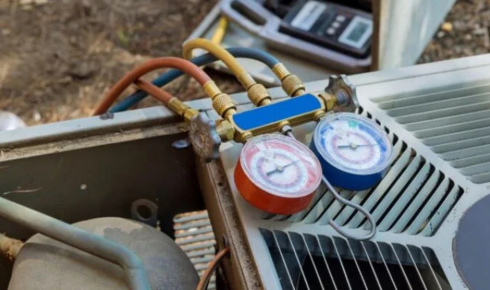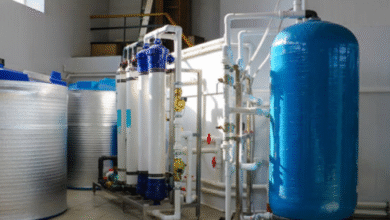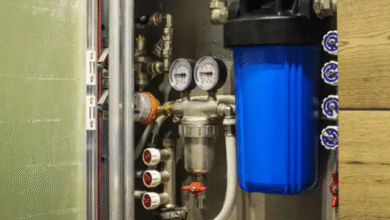Getting the Air Right: Understanding CFM and Why It Matters in HVAC Systems

There’s something oddly satisfying about walking into a perfectly cooled room on a hot day — that crisp, invisible balance where the air just feels right. It’s not too dry, not too heavy, and somehow, everything just flows. But behind that comfort is more than a good thermostat setting or a shiny new air conditioner. There’s a hidden player working quietly in the background: airflow.
And at the heart of understanding airflow is a simple yet powerful measurement — CFM. You’ve probably seen it thrown around in HVAC brochures or tech specs, but few people really stop to think about what it means. The truth? This little acronym can make or break how your system performs.
So, let’s slow down and unpack what cfm meaning in hvac really is — not in engineer-speak, but in everyday language that actually makes sense.
So, What Exactly Is CFM?
CFM stands for Cubic Feet per Minute. It’s a measure of how much air your HVAC system moves in one minute. Imagine holding a cube that’s one foot wide, one foot tall, and one foot deep — that’s a cubic foot. Now picture how many of those cubes of air your system can push or pull through the ductwork every 60 seconds. That’s your CFM.
It might sound overly technical, but it’s actually a simple concept once you visualize it. High CFM means your system moves more air — which is great for larger spaces or systems that need stronger circulation. Low CFM, on the other hand, might mean less airflow, which could be fine for smaller rooms or quieter performance.
Every HVAC system, from a home air conditioner to a commercial ventilation setup, relies on getting this number right. It’s like the rhythm your entire system breathes to — too slow, and your home feels unevenly cooled; too fast, and you’re wasting energy or drying out the air.
The Balance Between Airflow and Comfort
The secret to good heating or cooling isn’t just temperature — it’s distribution. You could have the most efficient system in the world, but if it’s not moving air properly, you’ll end up with hot and cold spots, stuffy rooms, or constant humidity problems.
Think about when you’ve sat in a restaurant where one table feels like it’s under a wind tunnel while another feels forgotten by the AC entirely. That’s poor CFM distribution. Your HVAC system is like your body’s circulatory system — it doesn’t just need to pump, it needs to pump evenly.
That’s where understanding cfm meaning in hvac becomes so important. It’s the baseline for designing ductwork, selecting vents, and sizing the entire system. Too little airflow, and your coils can freeze or overheat. Too much, and your energy bills climb without any added comfort. It’s all about balance — that sweet spot where efficiency and comfort meet.
How CFM Affects Everyday Life
You might not think about airflow much, but you feel it every day. When your system’s CFM is off, it shows up in ways that are subtle but frustrating:
- The living room cools faster than the bedroom.
- Your AC runs longer than usual but never quite hits the right temperature.
- The air feels dry, even when the thermostat says it’s fine.
These issues often come down to air volume. When airflow isn’t calibrated properly, your system works harder to compensate. That means more energy, more wear and tear, and less comfort.
For example, a typical home might need 400 CFM of airflow for every ton of air conditioning capacity. If your system delivers much less than that, it struggles to keep up. If it delivers much more, you risk short cycling — the system turns on and off too frequently, which wears it out faster.
The Role of CFM in Sizing and Design
When HVAC professionals design a system, CFM is one of their guiding numbers. It helps them determine how big ducts should be, what kind of blower motor to use, and how to balance airflow between different zones of a building.
If you’ve ever seen those metal ducts hidden in your ceiling or crawlspace, every bend and junction is designed to maintain the right air pressure and flow. Change that — by blocking a vent, adding a filter that’s too restrictive, or installing a new unit without proper adjustments — and your CFM changes too.
That’s why technicians measure and adjust airflow during installation or maintenance. It’s not just about cooling your house; it’s about making sure the air moves through it the way it should.
This is also where tools like anemometers and manometers come into play — fancy gadgets that help measure air velocity and pressure to calculate accurate cfm in hvac systems. For pros, these readings are like vital signs for your air conditioner.
Can You Measure or Improve CFM at Home?
You don’t need specialized equipment to notice when your airflow feels off. If certain rooms always lag behind others in temperature, or if you can barely feel air from the vents even when the system is running, that’s a clear sign something’s out of balance.
Start with the basics:
- Make sure vents and registers are fully open and not blocked by furniture or curtains.
- Replace air filters regularly — dirty filters are one of the most common causes of low airflow.
- Check for leaks or disconnected ducts if you can safely access them.
If things still don’t feel right, it’s worth calling in a technician to perform an airflow test. They’ll measure pressure and flow throughout the system to find where the imbalance is happening — and whether it’s a duct issue, blower problem, or system mismatch.
Even small adjustments can make a world of difference. Sometimes, adding a return vent or balancing damper can even out airflow and drastically improve comfort.
When CFM Goes Wrong: Common Issues
Too much or too little airflow can both cause headaches. Low CFM can make your evaporator coil freeze because it’s not getting enough warm air to work with. That’s when you see ice building up on the lines or reduced cooling output.
High CFM, on the other hand, might cool your home too quickly, not allowing humidity to be properly removed from the air. The result? It’s technically “cool,” but somehow still sticky and uncomfortable.
In both cases, your HVAC system is wasting energy — either running too long or cycling too often. Getting airflow balanced means smoother operation, lower utility bills, and fewer breakdowns.
Why CFM Is the Quiet Hero of Efficiency
Airflow doesn’t get nearly as much attention as SEER ratings or thermostat brands, but it’s arguably just as important. The right airflow ensures every other part of your HVAC system — from filters to fans — can do its job properly.
When technicians talk about “tuning” a system, they’re often fine-tuning airflow. Adjusting fan speeds, cleaning ducts, and ensuring the right pressure all come back to one goal: getting that perfect CFM for your space.
So next time your home feels a little off — too stuffy, unevenly cooled, or just not right — remember that comfort is about more than temperature. It’s about how air moves through your home.
Wrapping It Up
CFM might sound like one of those technical terms best left to the professionals, but it’s really just the language of airflow — and understanding it helps you understand your comfort.
When you grasp cfm meaning in hvac, you see your system differently. You start noticing how each room feels, how vents sound, and how subtle tweaks make a big impact.
In the end, good airflow is invisible, but you can always feel when it’s missing. Because true comfort isn’t just cool air — it’s air that moves exactly how it should.



